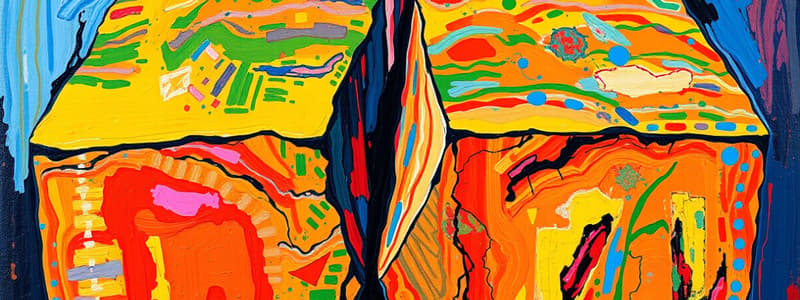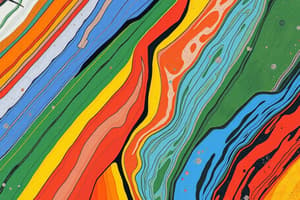Podcast
Questions and Answers
What is a transform fault boundary?
What is a transform fault boundary?
A transform fault boundary is formed when two tectonic plates slide past each other.
What is another name for a transform fault boundary?
What is another name for a transform fault boundary?
- Reverse fault
- Thrust fault
- Normal fault
- Strike-slip fault (correct)
What happens to rocks at a transform fault boundary?
What happens to rocks at a transform fault boundary?
Rocks split into pieces as the plates slip past each other.
What is an example of a transform fault?
What is an example of a transform fault?
A transform fault boundary can create an undersea ______ or linear fault valley.
A transform fault boundary can create an undersea ______ or linear fault valley.
Transform fault boundaries can only occur on land.
Transform fault boundaries can only occur on land.
Flashcards are hidden until you start studying
Study Notes
Transform Fault Boundary
- Formed when two tectonic plates slide past each other horizontally.
- Also referred to as a strike-slip fault.
- Results in rocks along the boundary breaking apart as plates move.
- Creation of cracks leads to the formation of undersea canyons or linear fault valleys.
- The San Andreas Fault is a prominent example of a transform fault boundary.
Visual Representation
- Image illustrates two tectonic plates with different shades of brown demonstrating movement.
- A crack, indicative of the fault, is visible where the plates are in contact.
- Arrows in the image indicate direction of plate movement; the top plate shifts left while the bottom plate shifts right.
- Illustrates how the horizontal movement of tectonic plates results in geological features like faults and valleys.
Studying That Suits You
Use AI to generate personalized quizzes and flashcards to suit your learning preferences.




